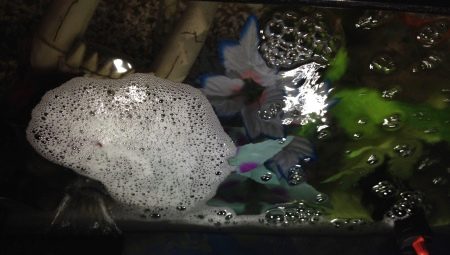Foam in an aquarium is very common and appears for many reasons. In most cases, this situation does not pose a threat to the aquarium community, but sometimes serves as a direct signal of the incorrect organization of tank maintenance. Whatever the nature of the foam, it is necessary to find out the causes of its appearance as soon as possible, and if the situation requires it, immediately begin to eliminate them.

What it is?
Foam on the surface of the tank is an accumulation of organic compounds resulting from various factors. Organics are represented mainly by proteins and amino acids present in large quantities in water.
As a result of their increased concentration, the water becomes much fatter, and the operation of filtration and aeration systems that create currents in the water only whips the protein.
As a result, a large amount of foam appears on the surface, which sometimes not only spoils the appearance of the aquarium, but also harms its inhabitants. It should be noted that soft water, unlike hard water, has a tendency to foamTherefore, when you first start the aquarium, you need to consider this point.
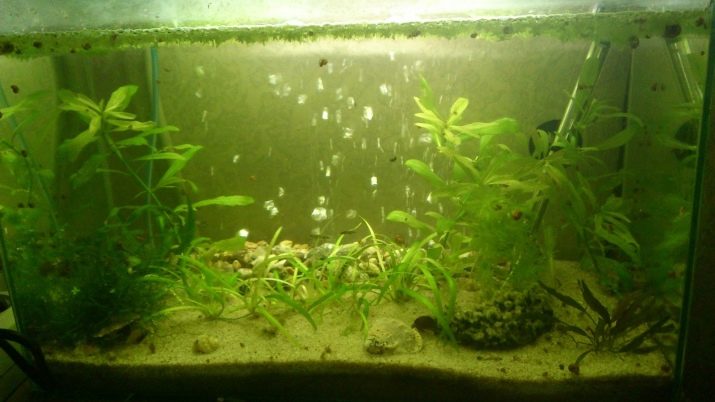
Appearances and remedies
Foaming a home pond is a problem that every aquarist has encountered at least once in his life. There is no need to panic in such a situation, the main thing is to try to recognize the cause of the foam as quickly as possible and act in accordance with the circumstances. Below are the most common foam formation factors and methods for eliminating it.

Launch aquarium
It often happens that a person has acquired an aquarium, calcined the soil, planted plants, set up pre-sanitized decorations, installed a filter and a compressor - everything was done according to the rules, and after a few days the water began to foam and become cloudy. In this situation, you should not worry, since the deterioration in water quality is a consequence of the establishment of biological equilibrium in the aquarium. During this period, beneficial bacteria are included in the work and trigger the mechanisms of self-regulation of the reservoir.
In this case, you absolutely do not need to do anything, you should completely trust nature and wait for the restoration of bio-balance.
About the fifth day, the foam will begin to disappear, and the water will become transparent. After this happens, it will be possible to proceed to the next stage of the launch of the aquarium - the settlement of fish.

Scenery
Very often the appearance of foam is caused by low-quality decorations. This is especially true for products containing varnish or painted in different colors. Unscrupulous manufacturers in the pursuit of profit try to make their products more attractive, which often occurs at the expense of the quality of the goods. In this regard, decorations should be purchased only in specialized stores, try to avoid elements coated with varnish or paint.
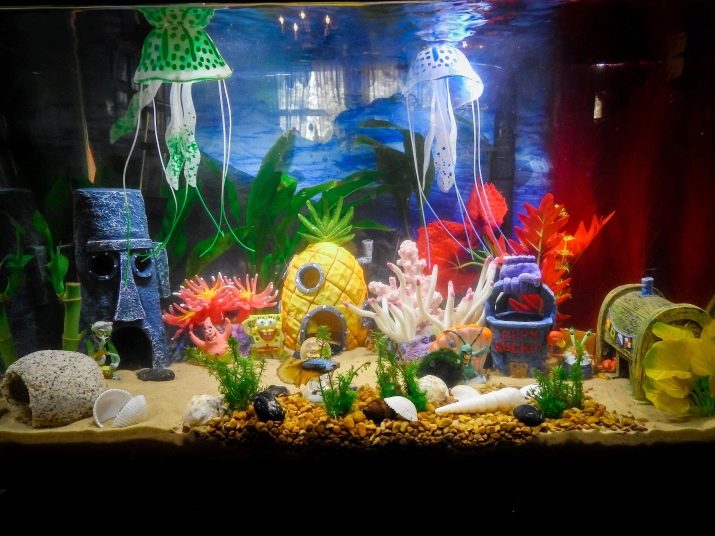
Foam from such models usually has a gray or milky tint or acquires the color in which the decoration is painted.
therefore if the water foams a few days after installing a new accessory, then the thing is most likely in it. In such a situation, you should immediately remove the dangerous object from the water and turn on the filtration and aeration systems at full capacity. And also in the scenery, the dead inhabitants of the aquarium often get stuck, which causes protein pollution of the water, and, as a result, the appearance of foam. To prevent such cases, it is necessary to regularly inspect decor items, immediately remove such finds from the aquarium.
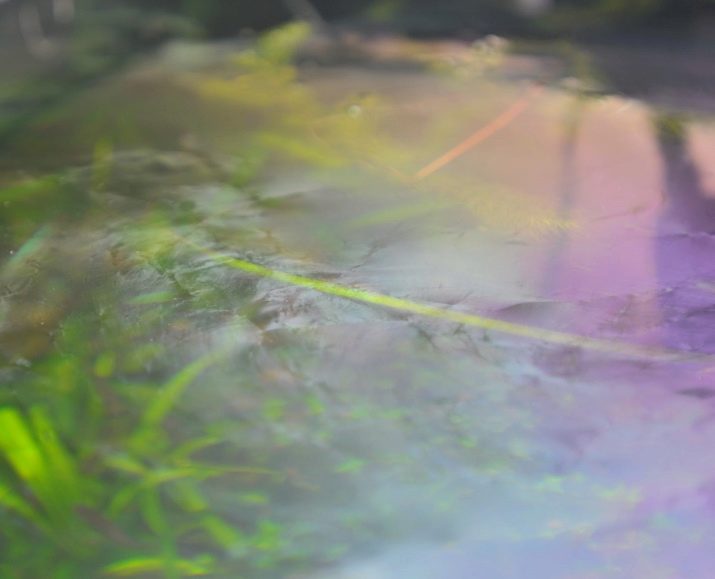
Poor filtering
Inefficiency of the filter also leads to the formation of foam and is recognized very easily. So, if in water, as in foam, there are many organic residues, as well as blue-green and red algae, then the filter is either heavily contaminated or has a low power. The way out will be the analysis and washing of the filter element, and in case of lack of power, purchase a stronger model.
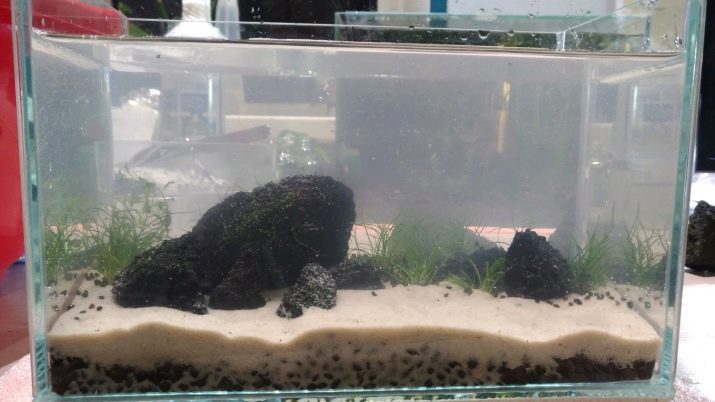
Irregular cleaning
To understand that the foam in the aquarium is formed from improper care can be a lot of garbage in the water. If scales, fish waste and food residues float in the tank, then no filtration will help here, urgent measures must be taken to purify the water. Moreover, in especially neglected cases, when fungal mucus appeared along with foam, it will need to be completely replaced and the aquarium restarted.
To prevent such situations, you should weekly carry out a fluid change in the amount of 1/4 of the total volume and do not overfeed the fish.
Feed should be strewed exactly as much as they eat in 5 minutes. In addition, the bottom of the tank must be siphoned regularly, and the decorations should be removed and thoroughly washed.
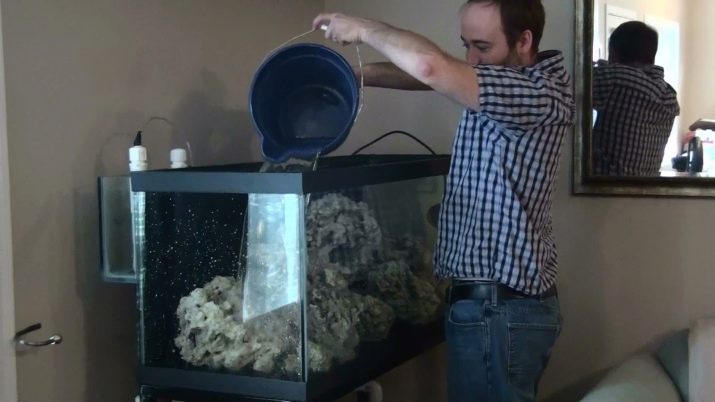
Frequent water change
Frequent substitution of large volumes of water also leads to the appearance of foam. Due to the constant infusion of fresh portions, beneficial bacteria do not have time to recover and be included in the system of self-regulation of the reservoir. The biological balance is disturbed, the water becomes cloudy and begins to foam. To prevent this kind of situation, you can not change more than 1/4 of the water at a time, and this should be done no more than once a week.
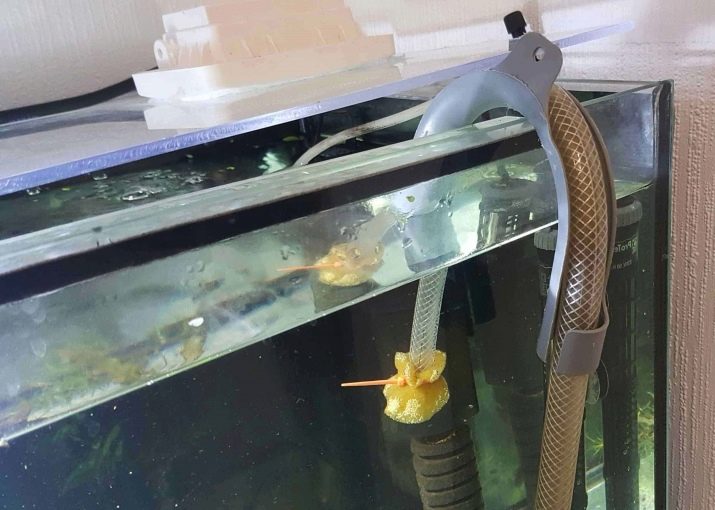
Overpopulation
Foam in the aquarium often appears from the high density of fish, which should not be allowed for the following reasons:
- leads to stress on the aquarium inhabitants themselves;
- causes deterioration in the organoleptic properties of water; the liquid becomes cloudy and begins to foam very much in the corners.
To avoid such situations, you should adhere to certain standards.
So, 1 cm of fish should have 1 liter of water.
At higher densities, some species of fish begin to behave aggressively, while others become very sick.

Medications
Sometimes it happens that after the introduction of a particular drug, the water in the aquarium has become very foamy and cloudy. In such cases, a mechanical filter and aerator should be used to minimize the amount of medication. The best option is to pre-test a small amount of the drug in a separate tank. This will help determine the dosage and predict the development of events in a large aquarium.
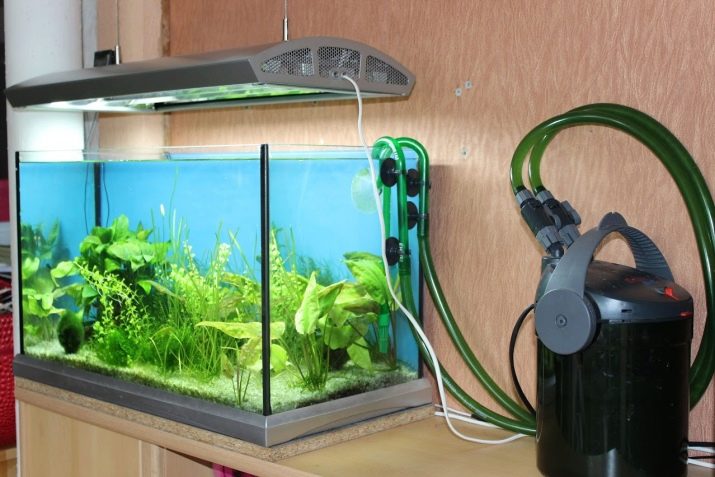
Plants
Algae in the process of growth release a large amount of volatile substances into the water, leading to the appearance of foam.
That the reason lies precisely in the plants can be easily determined by the putrid odor or the smell of hydrogen sulfide.
Often such cases are accompanied by soil damage. To correct the situation, you need to remove the soil, thoroughly rinse it in a solution of potassium permanganate and calcine in the oven.
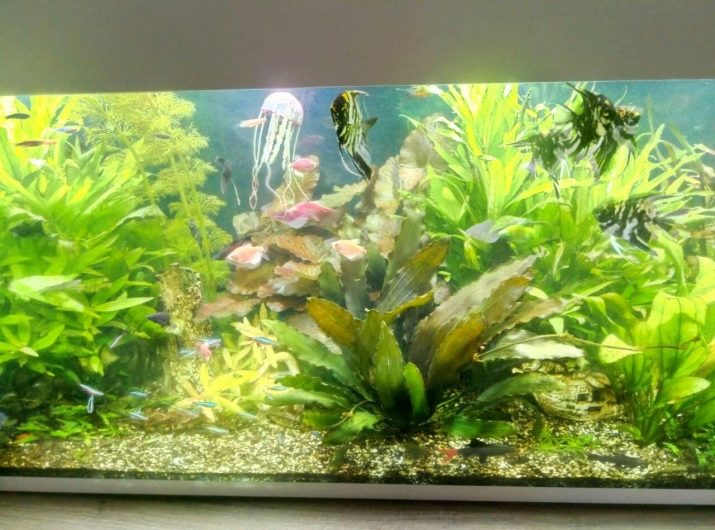
Mass spawning
Often during a period of mass spawning, the water in the aquarium begins to foam. This is due to the high content of protein in the breeding products. Similar processes occur at the time of larvae hatching. It is not necessary to do anything in such cases, as this is a temporary phenomenon. Thus, a weekly water change, regular siphon of the bottom, the use of filtration and aeration systems, the rational use of medicines, as well as the proper feeding of fish will guarantee the cleanliness of the water in the aquarium and minimize the risk of foam.
What is the foam in the aquarium, see below.
